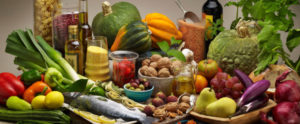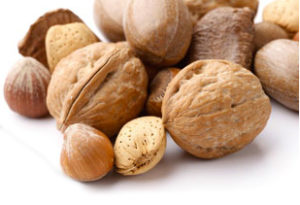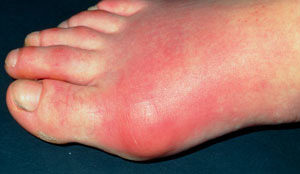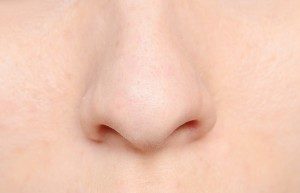 Many of us who who spend time outdoors worry about ticks. Just about everyone in the Northeast knows someone who has struggled with Lyme disease or one of the other diseases spread by ticks. An earlier post from June 8, 2015 noted that the CDC says that there are 14 known tick-borne diseases in the United States, and possibly 15 (if recently discovered Bourbon virus is included). Lyme disease is the most common, but people can be infected with more than one tick-borne illness at a time. [POST on Some Ways To Get Rid of Ticks]
Many of us who who spend time outdoors worry about ticks. Just about everyone in the Northeast knows someone who has struggled with Lyme disease or one of the other diseases spread by ticks. An earlier post from June 8, 2015 noted that the CDC says that there are 14 known tick-borne diseases in the United States, and possibly 15 (if recently discovered Bourbon virus is included). Lyme disease is the most common, but people can be infected with more than one tick-borne illness at a time. [POST on Some Ways To Get Rid of Ticks]
But recently I've seen news reports about a rare and scary tick borne disease called Powassan virus which is spread by deer ticks. News stories reported that an infant that developed the disease was the first case ever in Connecticut, and that the tick had been attached less than 3 hours on the child.
What is Powassan virus and should I be concerned? The good news is that it is very rare, but the bad news is that it's very scary: the virus can be transmitted in less than 2 hours (even as little as 15 minutes!) from an attached tick, and is fatal in about 10% of cases. It can cause encephalitis. And among those who recover, there is about a 50 percent chance of permanent neurological damage. On the other hand, the CDC also says: "Many people who become infected with POW virus do not develop any symptoms." - But note that we don't know how many people get it and don't get serious symptoms, or any symptoms at all.
Powassan virus (POWV) is a tick-borne flavivirus that was first discovered in Ontario, Canada in 1956. At this time we don't know how prevalent it is in the US. From 2006 to 2015, an average of 7 cases of POWV were reported each year in the United States - only 77 cases in total. Although the virus is mostly found in the Northeast and Great Lakes region of the United States, some states outside of this area have been reporting their first cases. One recent study found that the Powassan virus was in 1 to 2% of the ticks studied in Long Island in NY and Connecticut.
The Centers for Disease Control (CDC) states that: "Signs and symptoms of infection can include fever, headache, vomiting, weakness, confusion, seizures, and memory loss. Long-term neurologic problems may occur. There is no specific treatment, but people with severe Powassan virus illnesses often need to be hospitalized to receive respiratory support, intravenous fluids, or medications to reduce swelling in the brain. One study of 14 Powassan virus cases in NY state (2004-20012) reported that all of the hospitalized patients who received corticosteroids during their illness survived (looks like something helps).
From CNN: Experts warn of increases in tick-borne Powassan virus
Summer is nearly here, and it's bringing fears of a rare tick-borne disease called Powassan. This potentially life-threatening virus is carried and transmitted by three types of ticks, including the deer tick that transmits Lyme disease. Over the past decade, 75 cases have been reported in the northeastern states and the Great Lakes region, according to the US Centers for Disease Control and Prevention. Though no one can say how many infections will occur this year, warmer winters have led to an increased tick population, so experts predict rising tick-borne infections of many types.
Everyone is at risk for Powassan: Newborns, 20-somethings, the middle-aged, the elderly and the immunocompromised. Anyone bitten by an infected tick can get it, said Dr. Jennifer Lyons, chief of the Division of Neurological Infections and Inflammatory Diseases at Brigham and Women's Hospital in Boston. Infections are most likely during late spring, early summer and mid-fall, when ticks are most active.
"About 15% of patients who are infected and have symptoms are not going survive," said Lyons, who is also an assistant professor of neurology at Harvard Medical School. "Of the survivors, at least 50% will have long-term neurological damage that is not going to resolve." Although most infected people will never show symptoms, those who do become sick usually do so a few days to about a week after the tick bite, she said. The most common symptoms will be fever and headache. "You basically feel nonspecific flu-like stuff," Lyons said, including "muscle aches and pains; maybe you have a little rash on your skin, but almost certainly, you'll have a fever and the headache."The unlucky few who develop a more serious illness will do so "very quickly over the next couple of days," she said. "You start to develop difficulties with maintaining your consciousness and your cognition. ....
Just as there are no vaccines to prevent infection, there are also no treatments for Powassan. There are some experimental therapies we try when somebody comes in and they get here early enough and we get the therapy started early enough, but we have no idea if any of that works," Lyons said. Standard treatment includes intravenous fluids, though antiviral medications, systemic corticosteroids and other drugs have been tried in some patients.
Scientists also believe Powassan is on the rise based on studies that have identified an increasing number of infections in deer. Similarly, Lyme is showing increasing numbers. ....To make the matter more complicated, we are seeing greater number of ticks infected with other tick-associated pathogens, including babesiosis and anaplasmosis," Molaei said. Both babesiosis and anaplasmosis usually don't have symptoms, just like Powassan, though both may cause severe or even life-threatening illnesses.
Medical story about the Connecticut infant who developed Powassan virus. From Contagion Live: Connecticut Reports Its First Human Case of Powassan Virus

 Another study finding health benefits of a fiber rich diet, which means lots of fruits, vegetables, whole grains, legumes (beans), nuts, and seeds. This time,
Another study finding health benefits of a fiber rich diet, which means lots of fruits, vegetables, whole grains, legumes (beans), nuts, and seeds. This time,  News about the controversial pesticide Roundup and its active ingredient glyphosate just keep coming. Roundup is the most heavily used pesticide in the world, and it is used as a
News about the controversial pesticide Roundup and its active ingredient glyphosate just keep coming. Roundup is the most heavily used pesticide in the world, and it is used as a  Roundup is a pesticide (a weed-killer or herbicide) containing the active ingredient glyphosate. It is a
Roundup is a pesticide (a weed-killer or herbicide) containing the active ingredient glyphosate. It is a 
 Amazing study results - if true - about some health benefits of eating nuts. Just tree nuts, not peanuts (which are actually a legume). Researchers at the Dana-Farber Cancer Institute in Boston found that colon cancer survivors who ate at least two ounces (57 grams) of tree nuts a week were 42% less likely to have their cancer return or a 53% lower chance of dying from their cancer than those who did not eat nuts.
Amazing study results - if true - about some health benefits of eating nuts. Just tree nuts, not peanuts (which are actually a legume). Researchers at the Dana-Farber Cancer Institute in Boston found that colon cancer survivors who ate at least two ounces (57 grams) of tree nuts a week were 42% less likely to have their cancer return or a 53% lower chance of dying from their cancer than those who did not eat nuts.  Once again a great reason to exercise - a study found that adults with the highest levels of weekly physical activity had the longest telomeres, which are markers of overall health and aging. Think of it this way: we all age, but some people seem young for their age, while others seem old for their age. This study looked at differences among groups of people at the cellular level.
Once again a great reason to exercise - a study found that adults with the highest levels of weekly physical activity had the longest telomeres, which are markers of overall health and aging. Think of it this way: we all age, but some people seem young for their age, while others seem old for their age. This study looked at differences among groups of people at the cellular level. Gout is something that is not discussed that much, but it has been increasing in recent years and now afflicts about 3.9% of adults in the US. Gout is a form of inflammatory arthritis, characterized by recurrent attacks of pain, tenderness, and swelling of a joint, frequently the joint of the big toe. It is caused by elevated levels of uric acid in the blood (known as hyperuricaemia).
Gout is something that is not discussed that much, but it has been increasing in recent years and now afflicts about 3.9% of adults in the US. Gout is a form of inflammatory arthritis, characterized by recurrent attacks of pain, tenderness, and swelling of a joint, frequently the joint of the big toe. It is caused by elevated levels of uric acid in the blood (known as hyperuricaemia). An amazing new study is about to start in Sweden - this study will see if "snot transplants" work for the treatment for chronic sinusitis! Will this turn out to be a permanent treatment? While
An amazing new study is about to start in Sweden - this study will see if "snot transplants" work for the treatment for chronic sinusitis! Will this turn out to be a permanent treatment? While 